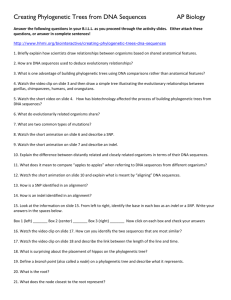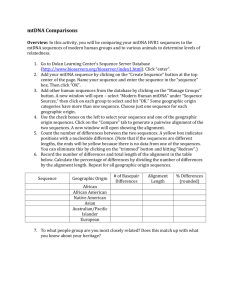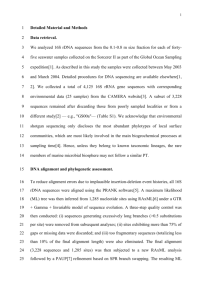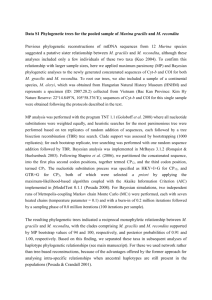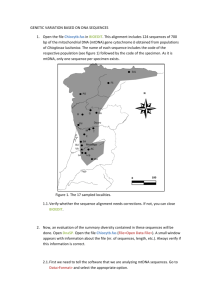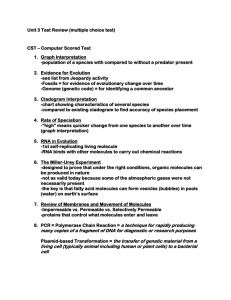This is an introductory lesson to DNA
advertisement
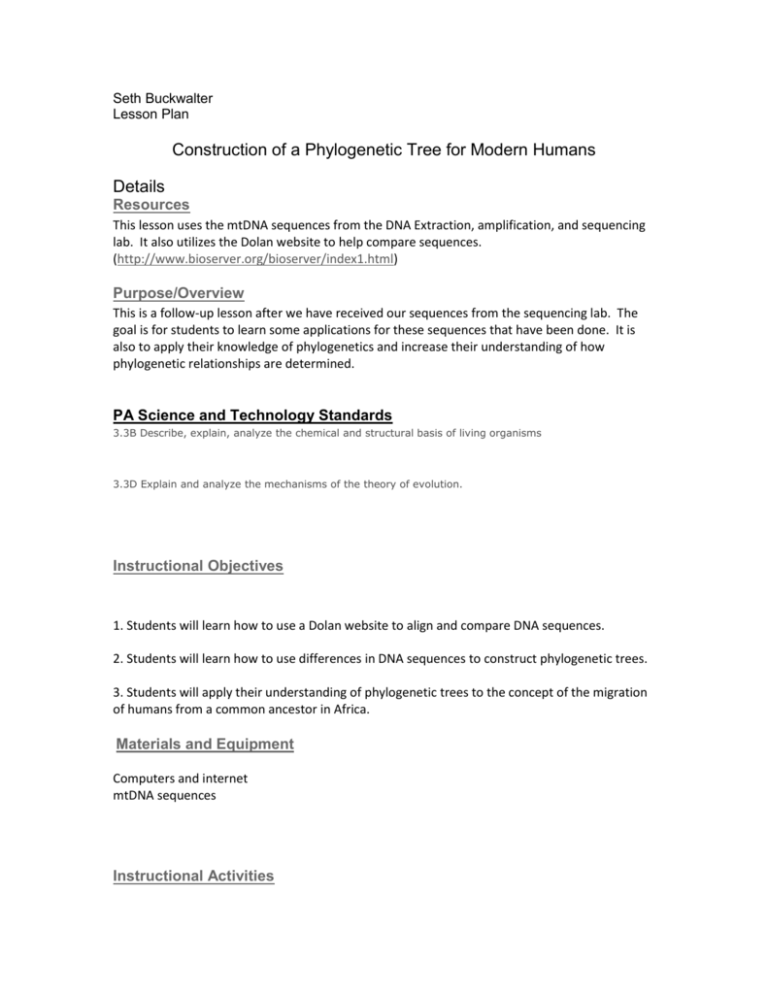
Seth Buckwalter Lesson Plan Construction of a Phylogenetic Tree for Modern Humans Details Resources This lesson uses the mtDNA sequences from the DNA Extraction, amplification, and sequencing lab. It also utilizes the Dolan website to help compare sequences. (http://www.bioserver.org/bioserver/index1.html) Purpose/Overview This is a follow-up lesson after we have received our sequences from the sequencing lab. The goal is for students to learn some applications for these sequences that have been done. It is also to apply their knowledge of phylogenetics and increase their understanding of how phylogenetic relationships are determined. PA Science and Technology Standards 3.3B Describe, explain, analyze the chemical and structural basis of living organisms 3.3D Explain and analyze the mechanisms of the theory of evolution. Instructional Objectives 1. Students will learn how to use a Dolan website to align and compare DNA sequences. 2. Students will learn how to use differences in DNA sequences to construct phylogenetic trees. 3. Students will apply their understanding of phylogenetic trees to the concept of the migration of humans from a common ancestor in Africa. Materials and Equipment Computers and internet mtDNA sequences Instructional Activities Introduction-The teacher will review how we obtained mtDNA sequences and give a brief overview of what we will be using them for today. Activity-Students will work in groups of 2 in a computer lab and follow the instructions on the “Construction of a Phylogenetic Tree of Modern Humans” handout Wrap-up: The teacher will lead the students in a discussion of the difficulties they had and why they think the encountered those difficulties. Assessment of the Instructional Objectives During class the teaching will assess the involvement of each individual in their group. The “Construction of a Phylogenetic Tree of Modern Humans” handout must be turned in by each group of students and graded by the teacher. In the end of the unit test, an essay question will be included asking the students to explain why mtDNA can be used to develop phylogenetic trees.



